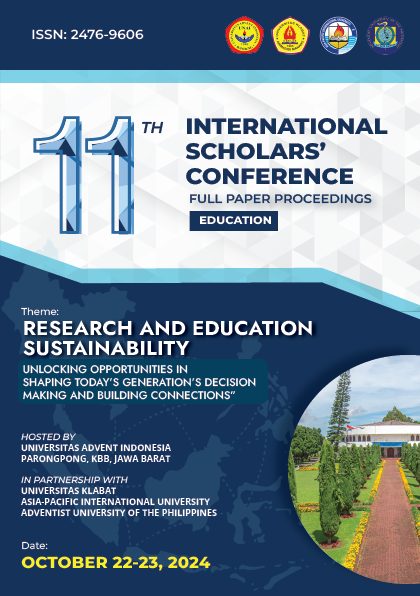The Power Of Persuasive Language In Political And Food Advertisements
Keywords:
Food Advertisement, Political Campaign, Persuasive LanguageAbstract
This study analyses how persuasive language is used in food and political advertisements, emphasizing how language techniques influence audience perception and behavior. The study finds important rhetorical strategies, such as emotional appeals, repetition, and nostalgia, by examining commercials from food brands (KFC and McDonald's) and political campaigns (Trump and Harris) between 2016 and 2024. Food advertising uses nostalgia, price, freedom to pick what kind of menu customers want, and convenience to draw in customers, whereas political campaigns frequently use fear, hope, and unity to connect with voters and non-voters. According to the research, persuasive language changes as society does, mirroring adjustments in political environments, consumer expectations, and the norm of today’s language use. This study emphasizes more toward the need for strategic messaging in advertising and offers suggestions for future campaigns that modify their language to better meet the needs of shifting target audiences.
Downloads
References
Arrona-Cardoza, P., Labonte, K., Cisneros-Franco, J. M., & Nielsen, D. E. (2024). The effects of food advertisements on food intake and neural activity: A systematic review and meta-analysis of recent experimental studies. Journal of Nutrition Research, 58(2), 89-104.
Hoffmann, B. (2019). The Role of Advertising in Shaping Children's Preferences of Consumption. Journal of Consumer Behavior, 15(3), 211-225.
Huseynova, N., Amani, B., & Taghiyev, I. (2022). Theoretical analysis of persuasive communication in advertising and its application in marketing communication.
Jiménez-Picón, N., & Lomas-Campos, M. de las M. (2024). Effects of advertising on food consumption preferences in children. Journal of Child Nutrition, 37(3), 145160.
Jin-Ae Kang, Sookyeong Hong, Glenn T. Hubbard(2020). The role of storytelling in advertising: Consumer emotion, narrative engagement, and word-of-mouth intention. Journal of Advertising Research, 45(3), 123-145.
Katemba, C. V, & Tobing, J. H. . (2020). The “Hidden Pleasures” in Seagram’s advertisements: The art of Persuasion. Jurnal Ekspresi Seni: Jurnal Ilmu Pengetahuan Dan Karya Seni, 22(2), 2580–2208. http://dx.doi.org/10.26887/ekspresi.v22i2.1278
Khazar Journal of Humanities and Social Sciences, 25(2), 112-127.
Liu, Y., & Zhou, Y. (2021). Persuasive Communication in Advertising: An Overview of Recent Developments. Journal of Advertising Research, 61(3), 233-245.
Ponce-Blandón, J. A., Pabón-Carrasco, M., Romero-Castillo, R., Romero-Martín, M.,
Rozendaal, E., Buijzen, M., & Valkenburg, P. (2010). Children's Understanding of Advertisers' Persuasive Tactics. Journal of Advertising, 39(2), 21-36.
Shahid, S., Paul, J., Gilal, F. G., & Ansari, S. (2024). The role of sensory marketing and brand experience in building emotional attachment and brand loyalty in luxury retail stores. Journal of Luxury Marketing, 12(4), 234-250.
Spenkuch, J. L., & Toniatti, D. (2018). Political advertising and election results. Journal of Political Economics, 40(1), 56-72.
Tversky, B., & Chow, T. (2020). Language and culture in visual narratives. Journal of Visual Communication, 25(3), 145-162.
Valentino, N. A., Hutchings, V. L., & White, I. K. (2024). Cues that matter: How political ads prime racial attitudes during campaigns. Journal of Political Psychology, 45(2), 210-225.
Yuliah, S., Fitriyandi, J., & Yahya, M. (2021). The Persuasive Language Used in Advertisements in Magazine. Jurnal Bahasa Inggris Terapan, 7(2), Politeknik Negeri Bandung.
Downloads
Published
How to Cite
Issue
Section
License
Copyright (c) 2024 11th International Scholars Conference

This work is licensed under a Creative Commons Attribution-ShareAlike 4.0 International License.
Copyright © 2024 ISC Committee.














